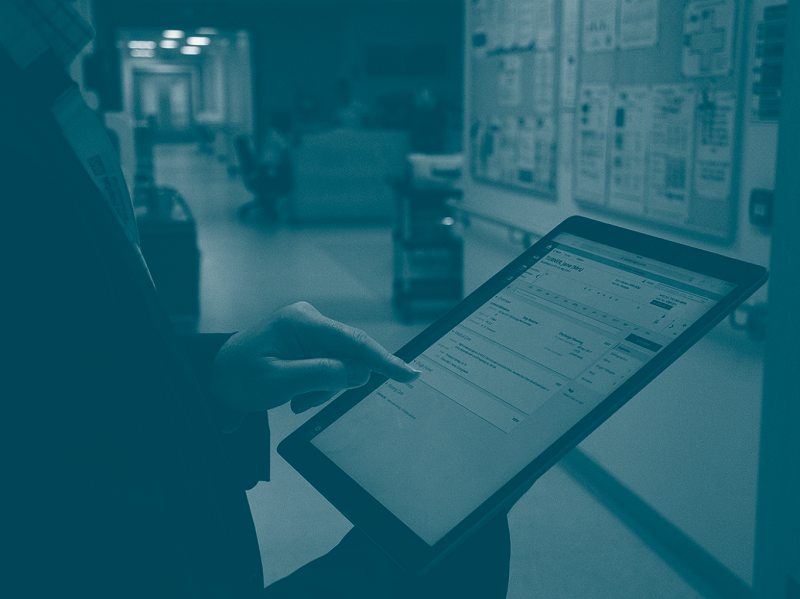Whether or not the UK is experiencing a black hole in public finances, there is no doubt that cost pressures will affect every area of public spending over the next few years.
And, while the NHS may have been ringfenced from the most-severe austerity measures, spiralling costs, an untenable reliance on agency workers, and the continuing escalation of demand created by a growing and ageing population are creating extraordinary pressures.
As the Chancellor emphasised recently, efficiency is a priority and technology – especially the Digital Transformation targets created by NHS Digital – is seen as key to achieving a more-cost-effective health service.
But is the NHS technology budget being spent effectively?
Should trusts be investing in Electronic Patient Record (EPR) systems that cost upwards of £50m in licenses alone, tens of millions more in extended change management programmes, and huge disruption to frontline staff during the typical five-to-ten-year implementation period?
And can these EPRs possibly deliver the massive improvement in efficiency required to justify that cost and upheaval when they force NHS organisations to totally overhaul existing, trusted processes?
Embracing interoperability
When interoperability allows the rapid sharing of information between existing solutions in both acute and primary care, I am calling for the NHS to embrace proven, UK-developed solutions that build on existing NHS processes and systems to deliver fast, incremental efficiency gains that transform both patient and clinician experience at a fraction of the cost and with minimal disruption.
In his Autumn Budget, Jeremy Hunt, Chancellor of The Exchequer, said: “We must ask challenging questions about how to reform all our public services for the better.”
The extra £3.3billion, while welcome in the face of so many other budget cuts, will not go far unless widescale change is achieved
And he made clear that reducing waste and increasing efficiency within public services is now an urgent priority – and within an annual budget heading towards £200billion, the NHS is on the frontline of the battle to achieve value for money.
But, with spending on agency staff hitting £3billion last year as trusts battle to fill huge gaps in the workforce, post-COVID-19 elective surgery waiting lists exceeding seven million people for the first time, record A&E attendances, and planned staff strike action, most trusts are focusing simply on keeping the doors open – and the extra £3.3billion, while welcome in the face of so many other budget cuts, will not go far unless widescale change is achieved.
Supporting frontline staff

While the current crisis is due, in part, to exceptional circumstances, the problems have been long understood.
A growing and ageing population with multiple complex health needs is putting extraordinary pressures on the entire health system. Add in the recognised issues within social care that contribute to bed blocking, and there are myriad problems to address throughout the system.
And there is no question that technology could, and should, be better used to support frontline staff.
Information sharing is vital, not only to improve the speed and efficiency of patient care, but also to minimise the time wasted by clinical staff in searching for, and then updating, records.
Technology budgets have risen dramatically in recent years, as NHS Digital has encouraged – and targeted – trusts and Integrated Care Systems (ICS) to embark upon significant investment to address the gaps in infrastructure.
But the investment model has been predicated too heavily on very-significant investments in monolithic systems that take years to deploy, require trusts to completely change existing processes and, as a result, demand extensive and expensive change management programmes.
While such systems may be appropriate in some trusts, it is fair to say that one size doesn’t fit all.
The right way to standardise
No one is arguing against the fact that there are clearly huge opportunities to eradicate cost by making better use of technology to improve efficiency.
The introduction of standardisation makes a lot of sense – but that does depend on the interpretation of standardisation.
UK-developed solutions that have been designed hand in hand with the NHS to interface with existing systems, and support processes and governance, are both simpler and faster to deploy
This is an interconnected ecosystem, from acute to primary care and back with referrals across the NHS and multiple, disconnected systems across this ecosystem fuel the inefficiency.
But is a big, monolithic system really the right fix? Especially one that does not adapt in any way to the workflows and processes demanded by a health service free at the point of care.
Despite the £50m-plus pricetags, the UK represents a tiny fraction of the revenue of some of these US providers, which means these solutions will never fully support NHS specific needs.
There is no one-size-fits-all approach within this hugely-complex and diverse environment.
Clinicians cannot simply tick a box and follow a strict workflow. There is always an essential human aspect of health care.
The fact is that while there is inefficiency due to a lack of interoperability, clinicians across the NHS are using an array of home-grown specialist systems that work effectively.
Rather than accepting that the only answer is a global supplier or product, there has to be a recognition of another way of doing things
What they need is not another product, but an easy way to share information between existing, trusted solutions.
Integrating speech recognition, for example, can rapidly address the backlog in outpatient clinical correspondence that is leaving GPs and patients waiting many weeks to receive post-consultation information and referrals.
Interoperability is crucial to the success of the digital revolution
Ease of transformation
Transformation does not automatically require significant change management – with the right approach.
UK-developed solutions that have been designed hand in hand with the NHS to interface with existing systems, and support processes and governance, are both simpler and faster to deploy.
And the change management is minimal because the solutions already support clinical workflows.
Furthermore, these systems are designed to provide a specific solution – they are not massive monolith systems that already duplicate many of the software products already in place.
So how do trusts achieve a technology model that works both financially and operationally?
The key is to cast the net a little bit wider than maybe some of the more-traditional suppliers in this space.
Rather than accepting that the only answer is a global supplier or product, there has to be a recognition of another way of doing things.
Staff will abandon the NHS at ever greater rates if compelled to endure another expensive ‘transformation’ that demands a change to proven workflows and processes
IT strategists need to be asking some new questions. How can we make use of the technology and systems already in place? How can these solutions be integrated to provide clinicians with fast access to accurate patient data? Is it possible to continue with familiar work processes and profiles to minimise any impact on the front line?
Critically, where are the technology suppliers that can truly partner with the NHS in a way that is adaptable to a trust’s specific requirements, rather than having to embrace a model that has been designed elsewhere for a totally-different health system?
Under pressure
Technology that delivers efficiency is required today.
Change needs to be fast, but it also needs to be intuitive – there is no time to take people away from the frontline to learn new systems.
Clinicians require technology that adds benefits to their existing systems that, for example, intuitively simplify existing information capture processes.
And they need it now.
While Digital Transformation journeys have been outlined, can less-digitally-mature NHS trusts really wait another five years to achieve tangible change and deliver the efficiency benefits urgently required on the frontline?
The answer is clearly, ‘no’.
Frontline staff are under enormous pressure and there is no time or appetite for the introduction of another system that causes disruption and takes staff away from patient care.
The road ahead is challenging but, with the right approach, the NHS can achieve digital change without breaking the budget and with minimal disruption for front line staff
Staff will abandon the NHS at ever greater rates if compelled to endure another expensive ‘transformation’ that demands a change to proven workflows and processes.
Working with bespoke, best-of-breed technology that offers usability, interoperability, retention of existing processes, and workflows that people are used to is transformational in a good way.
And the icing on the cake is that these solutions are generally cheaper and faster to deploy and there is far less change management needed and far greater opportunities for innovation.
The road ahead is challenging but, with the right approach, the NHS can achieve digital change without breaking the budget and with minimal disruption for frontline staff.
